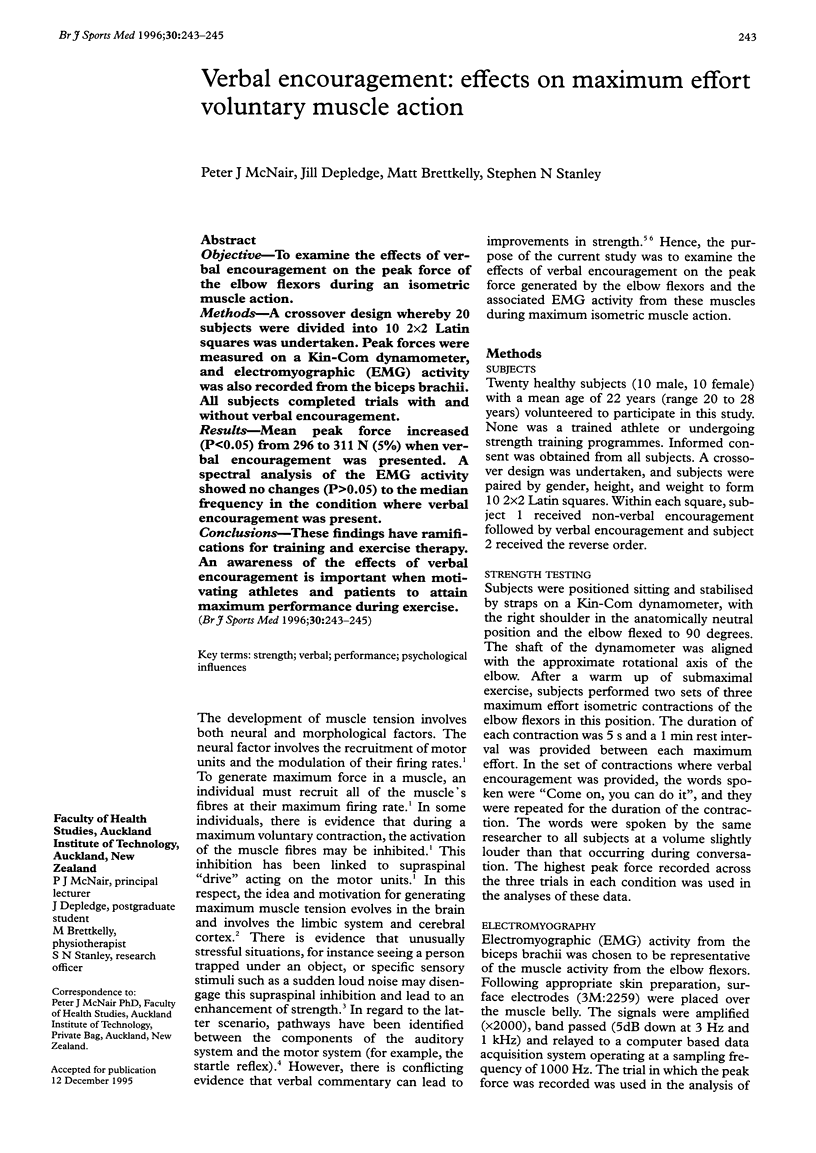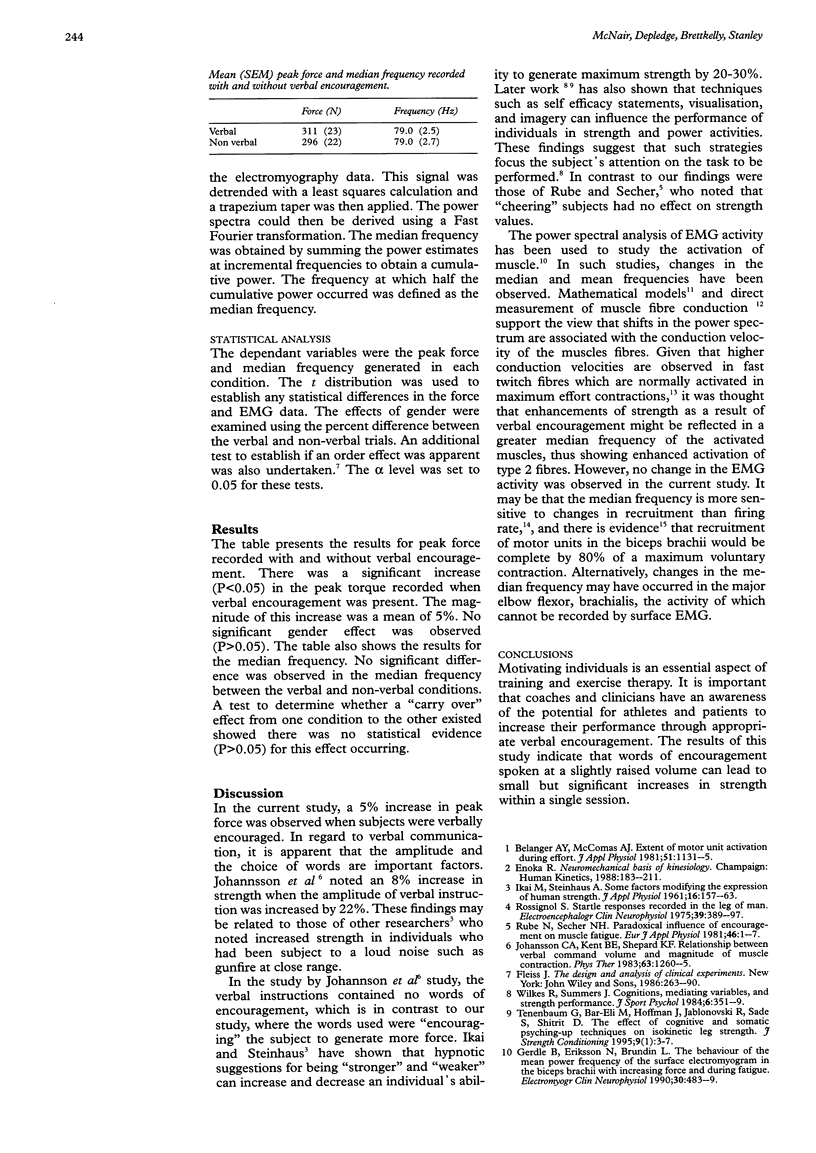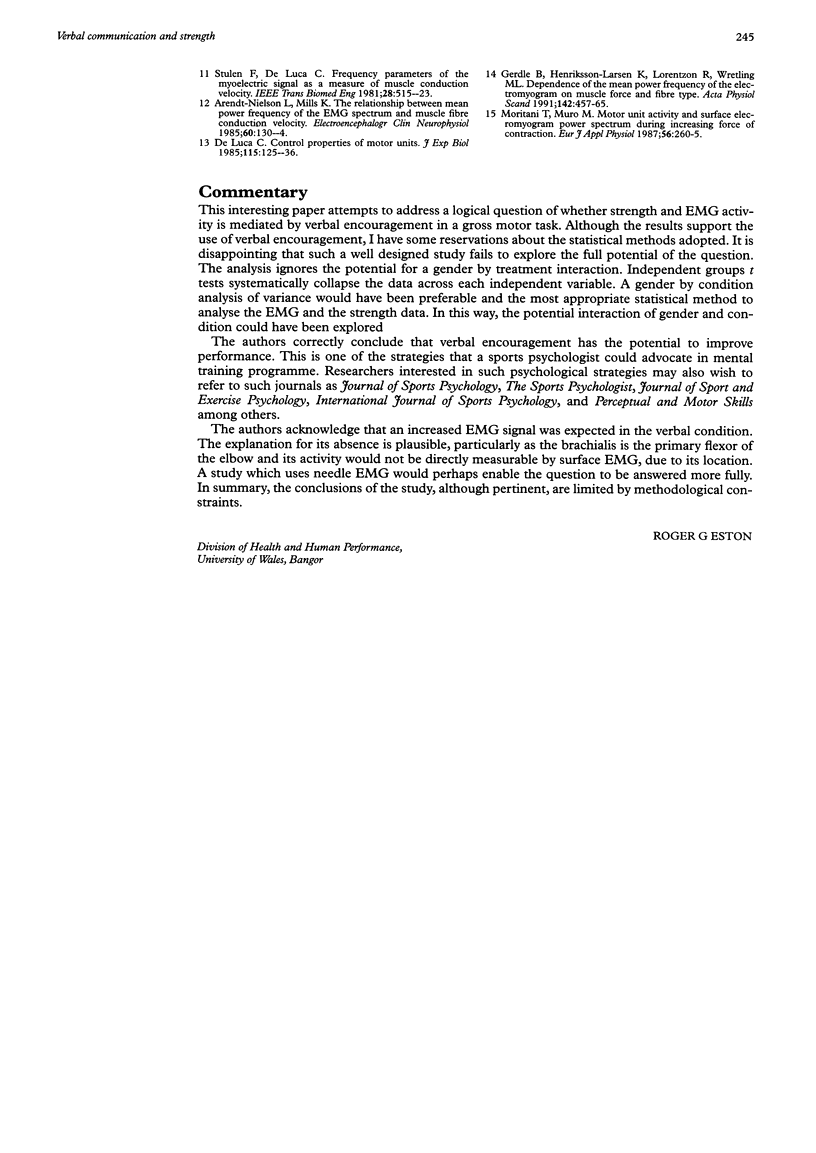Abstract
Objective
To examine the effects of verbal encouragement on the peak force of the elbow flexors during an isometric muscle action.
Methods
A crossover design whereby 20 subjects were divided into 10 2×2 Latin squares was undertaken. Peak forces were measured on a Kin-Com dynamometer, and electromyographic (EMG) activity was also recorded from the biceps brachii. All subjects completed trials with and without verbal encouragement.
Results
Mean peak force increased (P<0.05) from 296 to 311 N (5%) when verbal encouragement was presented. A spectral analysis of the EMG activity showed no changes (P>0.05) to the median frequency in the condition where verbal encouragement was present.
Conclusions
These findings have ramifications for training and exercise therapy. An awareness of the effects of verbal encouragement is important when motivating athletes and patients to attain maximum performance during exercise.
Keywords: strength, verbal, performance, psychological influences
Full text
PDF


Selected References
These references are in PubMed. This may not be the complete list of references from this article.
- Belanger A. Y., McComas A. J. Extent of motor unit activation during effort. J Appl Physiol Respir Environ Exerc Physiol. 1981 Nov;51(5):1131–1135. doi: 10.1152/jappl.1981.51.5.1131. [DOI] [PubMed] [Google Scholar]
- De Luca C. J. Control properties of motor units. J Exp Biol. 1985 Mar;115:125–136. doi: 10.1242/jeb.115.1.125. [DOI] [PubMed] [Google Scholar]
- Gerdle B., Henriksson-Larsén K., Lorentzon R., Wretling M. L. Dependence of the mean power frequency of the electromyogram on muscle force and fibre type. Acta Physiol Scand. 1991 Aug;142(4):457–465. doi: 10.1111/j.1748-1716.1991.tb09180.x. [DOI] [PubMed] [Google Scholar]
- IKAI M., STEINHAUS A. H. Some factors modifying the expression of human strength. J Appl Physiol. 1961 Jan;16:157–163. doi: 10.1152/jappl.1961.16.1.157. [DOI] [PubMed] [Google Scholar]
- Johansson C. A., Kent B. E., Shepard K. F. Relationship between verbal command volume and magnitude of muscle contraction. Phys Ther. 1983 Aug;63(8):1260–1265. doi: 10.1093/ptj/63.8.1260. [DOI] [PubMed] [Google Scholar]
- Moritani T., Muro M. Motor unit activity and surface electromyogram power spectrum during increasing force of contraction. Eur J Appl Physiol Occup Physiol. 1987;56(3):260–265. doi: 10.1007/BF00690890. [DOI] [PubMed] [Google Scholar]
- Rossignol S. Startle responses recorded in the leg of man. Electroencephalogr Clin Neurophysiol. 1975 Oct;39(4):389–397. doi: 10.1016/0013-4694(75)90102-9. [DOI] [PubMed] [Google Scholar]
- Stulen F. B., DeLuca C. J. Frequency parameters of the myoelectric signal as a measure of muscle conduction velocity. IEEE Trans Biomed Eng. 1981 Jul;28(7):515–523. doi: 10.1109/TBME.1981.324738. [DOI] [PubMed] [Google Scholar]


